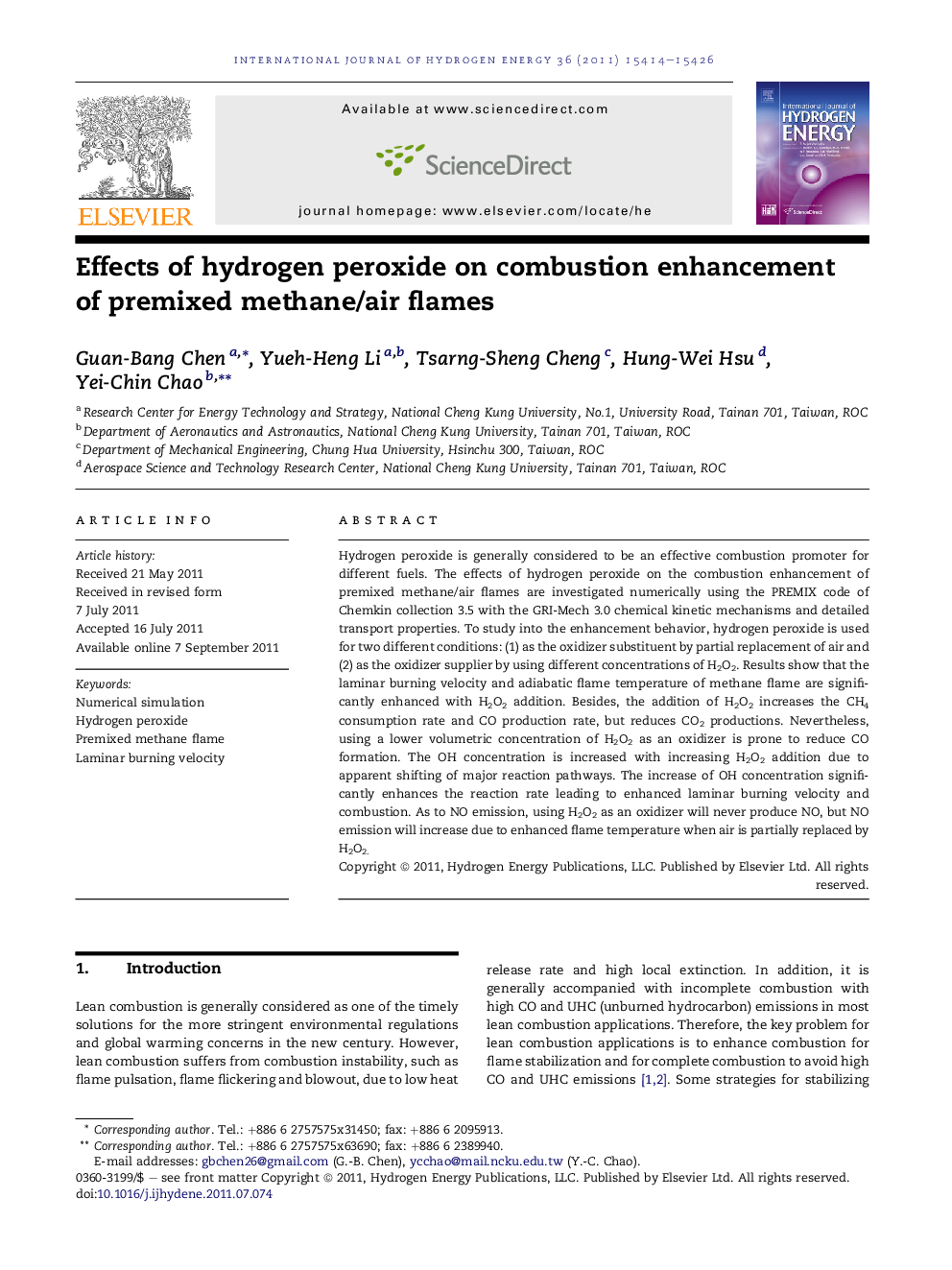| Article ID | Journal | Published Year | Pages | File Type |
|---|---|---|---|---|
| 1271835 | International Journal of Hydrogen Energy | 2011 | 13 Pages |
Hydrogen peroxide is generally considered to be an effective combustion promoter for different fuels. The effects of hydrogen peroxide on the combustion enhancement of premixed methane/air flames are investigated numerically using the PREMIX code of Chemkin collection 3.5 with the GRI-Mech 3.0 chemical kinetic mechanisms and detailed transport properties. To study into the enhancement behavior, hydrogen peroxide is used for two different conditions: (1) as the oxidizer substituent by partial replacement of air and (2) as the oxidizer supplier by using different concentrations of H2O2. Results show that the laminar burning velocity and adiabatic flame temperature of methane flame are significantly enhanced with H2O2 addition. Besides, the addition of H2O2 increases the CH4 consumption rate and CO production rate, but reduces CO2 productions. Nevertheless, using a lower volumetric concentration of H2O2 as an oxidizer is prone to reduce CO formation. The OH concentration is increased with increasing H2O2 addition due to apparent shifting of major reaction pathways. The increase of OH concentration significantly enhances the reaction rate leading to enhanced laminar burning velocity and combustion. As to NO emission, using H2O2 as an oxidizer will never produce NO, but NO emission will increase due to enhanced flame temperature when air is partially replaced by H2O2.
► H2O2 is used as the oxidizer. ► H2O2 significantly enhances the flame speed and flame temperature of CH4 flame. ► H2O2 affects the species concentration and production/consumption rate. ► NO emission is increased due to the high flame temperature by H2O2 addition.
